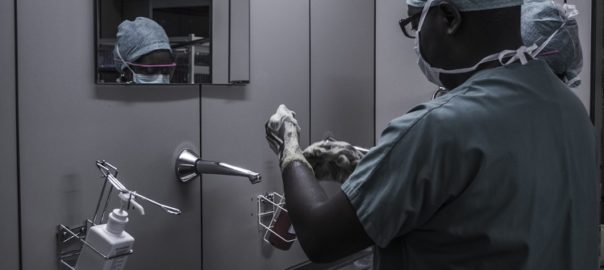Introduction
For this featured interview, based on his experience of more than 3000 cases of medical malpractice, we asked Rodney “What have been the most common difficulties experienced by the legal profession when it comes to running cases of medical negligence/malpractice and how can these be overcome?”
Rodney identified ten themes he has noted over the years, which can catch out even the most experienced lawyers and he went on to discuss each in turn.
Screening
As defence organisations point out, only one in five complaints about possible medical negligence have a likelihood of success and this has been borne out in his own practical experience. It is, therefore, necessary to triage or screen cases at the outset, to make sure that they at least have the potential for being able to display the essential triad of duty of care, breach of that duty, and consequential, or but for, damage. Some cases may appear obvious on face value but as most lawyers have limited medical knowledge, it is important to obtain a preliminary screening report by a medical expert to identify exactly who had the duty of care, what standard should be applied, and whether or not any damage is likely to have occurred specifically because of any suggested breach. This initial opinion can usually be based on a detailed statement from the client but may require the perusal of specific notes and records.
In many cases, the client’s concerns are in fact more in the nature of a complaint about behavioural issues, including the attitude of staff, poor communication skills, or delays in managing their case. These are not within the legal definition of medical negligence or malpractice and are more appropriately handled through the normal complaints procedure for the practice or institution involved, rarely proceeding to litigation. Such complaints usually produce a written response within a matter of months.
On occasions, a hospital or other source may have instigated Serious Incident Review which may identify areas where medical care has been deemed sub-standard and could be subject to a legal challenge. However, if lawyers become involved before such reviews are carried out, it is likely the report would not be released to the client as the matter would be deemed sub-judice.
A secondary review may also be appropriate once the medical evidence is complete. This considers all available evidence and allows the medical expert to work with counsel/ trial lawyers to consider the implications of potential strengths and weaknesses in the case before court proceedings.
Screening helps to contain costs by providing an early general overview of a case, for a fraction of the fees which would be required for a full liability and causation report plus a condition and prognosis report. Too often, Rodney says, he has noted lawyers skipping this vital preliminary phase and proceeding to obtain full reports which require considerable time, effort and for which costs which may not be recoverable.
Finally, he points out that the word ‘SCREENING’ is an excellent acronym for the other nine areas where difficulties can and do arise.
Statute
Almost all jurisdictions have a statute that limits the time allowed for the initiation of a case, usually to between one and five years. This is based on the date the cause of action accrued, modified by circumstances such as the time when the client is judged to have had reasonable knowledge of what has happened, related to age, for instance allowing young persons to bring cases from childhood after their age of emancipation and sometimes for those with mental health issues. Allowing the use of such a statute in defence of a claim is normally within the discretionary power of the court. Therefore, it is important to make sure there is no time bar or, in the alternative, there is a reasonable chance a court will allow proceedings to continue.
The presence of such a statute also serves as a warning to lawyers they should avoid any unnecessary delay in moving forward with their investigations or they may unintentionally run out of time and find themselves on the receiving end of a claim in professional negligence. This is another benefit from swift, initial screening which allows a determination to be made whether or not matters are likely to progress, issuing a holding writ if necessary. If not, the client can be informed, allowing them the latitude to seek other medical or legal advice should they wish before they run out of time.
Counsel
Counsel/Trial Lawyers should be consulted early after the initial screening. As well as giving legal direction for the proceedings, receipt of the screening report allows a more informed discussion of the case, particularly in the raising of particular questions they wish to be included in the briefing of experts. Counsel should maintain an ongoing overview as the various reports are received, to ensure the case stays on track and giving advice on handling any new issues as they arise.
Reports
The initial screening report should give advice on which specialties should be involved and in what order reports should be obtained. Under normal circumstances, the initial report is likely to deal with liability and causation. However, occasionally it is more appropriate to have a report detailing the likely consequential damages which may have arisen as, if these cannot be determined, a report on liability and causation is likely to be superfluous. A subsequence is not the same as consequence and just because a client has a particular complaint does not mean that it is in any way related to a breach of the duty of care. As an example, some weakness in a wrist following a well-healed fracture of the scaphoid bone is more a consequence of the injury even if it could be established the fracture was not fully stabilised for a week after the incident. Many cases fail on causation and, unless this is clear, there is no point in obtaining expert reports to deal with the nature of the injury, the present condition, or likely prognosis.
A duty of care is usually easy to determine. However, sometimes it is not so obvious and a case in medical negligence may be considered against a particular Consultant or Attending when a closer examination would reveal it is actually in the remit of other professionals from different medical specialities or, indeed, para-medical specialities such as nursing or physiotherapy. It is important therefore reports identify and focus on the key issues in the case and clearly elucidates if more than one speciality group has potentially breached their duty of care, such as a General Practitioner, Accident, and Emergency doctor, or other staff, all of whom may need to be co-joined.
Expert
Eminence is not the same as expertise and just because someone is well-known in their profession or has appeared in other cases, does not mean they are appropriate for the subject under discussion. Further, they may not have expertise in writing medical-legal reports, having meetings to negotiate with other experts, or giving evidence in court.
Experts must be chosen wisely, clearly understand their primary duty is to the court no matter who instructs them, and be a recognised expert in the subject matter of the case. They must be able to reason logically, both orally and on paper without using hyperbole, in a way which laypersons in general, and the court in particular, can understand and interpret. They need to be coldly objective and demonstrate no conflict of interest or bias on behalf of the plaintiff, the defence, or a specific line of medical therapy. It is quite reasonable for an expert to advocate a particular view as to how they feel a case should be managed, however, they must also be prepared to accept the fact that there is liable to be a reasonably held range of opinion which they should also state and, if necessary, indicate by logical argument why their opinion should be given preference.
Finally, experts have to accept that the standard is reasonableness, not perfection, and be prepared to alter their stated opinion if new evidence, which they have not previously considered, is presented during proceedings.
Expectations of the client
In some case, especially when the consequences have been devastating for the plaintiff, even the most experienced lawyers may become emotionally involved. The rule is empathy, not sympathy and to remain objective throughout so clear, unencumbered, professional advice may be given to the client. At an early stage, it is necessary to have an in-depth conversation with the client in order to ascertain exactly what outcome they expect from the case. Some want to punish, others wish for monetary compensation but on many occasions the client is primarily looking for a detailed, understandable explanation as to what happened. Anger is a common emotion that is best handled through empathy, understanding, and certainty they are being listened to, rather than any logical argument. Managing a client’s expectations is therefore one of the most important functions of a lawyer and vital if the client is to feel content with the outcome, however long the process takes.
Notes and records
Guided by the initial screening and comments of Counsel, all appropriate notes and records need to be expeditiously sourced, ordered, and paginated for ease of reference especially as, in some cases, many thousands of pages may be involved. As well as contemporaneous medical notes, other records may be valuable, for instance, letters to the client from an institution following a complaint or other internal documents such as a report resulting from a serious incident review. External documents may be available following a post-mortem or inquest and the client themselves may have notes in a diary or even photographs on their phone.
Medical experts should be suspicious if they find notes have been redacted, especially if this has been carried out by the legal team either for the defence or the plaintiff. Unless the redaction relates to the names of third parties, it is not best practice to edit the notes in any way before forwarding them to an expert.
Insurance
Medical-legal cases can be very expensive and costs need to be controlled. There is no such this as a water-tight case and loss can result in a heavy financial burden. Any law firm should be clear about how they are going to be compensated in the event a case does not proceed. Unfortunately, not doing so has led to a number of cases being pursued long after they should have been discontinued, taking proceedings up to the door of the court in order to try and get a settlement of some sort to at least cover expenses. This sort of behaviour is frowned upon by the court system and is bordering on unethical.
Some form of insurance is therefore valuable and in some cases, the client can self-insure or have a legal policy in place to at least cover initial advices. It may also be possible to obtain After the Event Insurance if it is clear from the initial reports and the opinion of Counsel the case has a high likelihood of success. Using a blunderbuss approach, ordering multiple expert reports at an early stage, and even obtaining second reports when one expert report does not appear to back the client’s case is a recipe for financial disaster. Once again, a process or system for conducting medico-legal cases is vital to success, remembering that a “system” is there to Save, Yourself, Stress, Time, Energy, and Money.
No medical knowledge/experience
Rodney points out his credo is “to help clients, their legal advisors and the courts to understand more clearly the nature of medical evidence in individual cases so they can make better decisions.” This should be a fundamental belief for all of those preparing expert reports. Courts make determinations, experts assist by rendering the medical evidence understandable for a lay audience and by giving advice as to acceptable standards of care.
The lawyers most likely to get into trouble with the process are those who do not undertake these proceedings on a regular basis. There are many nuances from both a medical and legal point of view that can make cases that look similar produce markedly different outcomes. One of those is an understanding that perfection is not a reasonable standard and secondly that no medical treatment can be guaranteed success. Known complications arise which is the purpose of the doctrine of informed consent. However, it is also true, that just because a patient has been told about the potential risks associated with a particular therapy or procedure, does not mean that when such difficulties arise it could not be considered due to a negligent act. It very much depends on context and circumstances in the individual case and again the expert should be in the best position to determine whether a poor outcome would reasonably be regarded as due to a known complication in all the circumstances or represent a negligent breach of the duty of care.
In circumstances where experts differ in the interpretation of an objective finding, it is for the courts to assess all the evidence before them and make a determination. Sometimes this is difficult for lawyers to understand and particularly if they lack medical knowledge and experience of such cases. Especially at an early stage in their career, it is good practice to have coaches and mentors both within and outside their firm or even the profession. By reflecting on more challenging cases, they can continue to get the learning from them which in turn grows their expertise in what is a niche area and helps to professionalise their practice.
Guiding/directing an expert
It is an expert’s duty to remain independent and objective, no matter who engages them. It is certainly reasonable to ask questions as to why they have come to a particular conclusion or to ask for an evaluation of new evidence, but it is not acceptable to ask an expert to ‘tweak’ a report in order to place a client in a better light. While some lawyers attempt to justify this by stating they are only trying to do their best for the client, they do not serve either the justice system or their profession well. An expert who agrees to change any element of a report under such circumstances is compromised, not just for that case but for any other, and is open to being severely criticised in court. It is not unknown for experts found to have breached this code of conduct to have their professional registration to practice removed by their governing body. Such censure can have considerable implications for their personal, professional, and financial well-being.
Conclusion
In reflecting on the most frequent challenges he has come across in his three decades of dealing with personal injury and medical malpractice cases, Rodney concludes that representing clients in cases of potential medical negligence requires legal representatives to have an understanding of the many complexities involved and to be aware of the pitfalls. Securing early and proficient advice from an appropriate medical expert can mitigate the financial and reputational risks.
It is clear why Rodney is regarded as one of the foremost authorities on the medical aspects of medico-legal practice, and why his keynote speaking, coaching, and tutoring is so highly regarded by lawyers and doctors involved in such cases.











